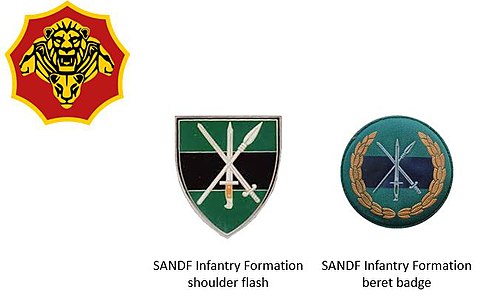1984 Grahamstown riots
The Unit was involved in quelling the 1984 Grahamstown riots. The army had been called in to assist the South African Police who had failed to contain the situation.
Battle for Kibati
In 2013, 850 members of 6 SAI were part of the United Nations (UN) Force Intervention Brigade (FIB) authorised to use lethal force to achieve peace in the DRC. 6 SAIs involvement in the FIB saw the defeat of the M23 rebel group during the Battle of Kibati and other skirmishes. The first elements moved into the DRC on 28 April 2013 and the rest following from 15 June, with all 850 South African troops ready for action by 18 June. [9] [10]
Special Forces elements such as snipers were also attached to 6 SAI. When the FIB came under mortar fire, 6 SAI established an observation post at the triple towers site and engaged enemy targets up to 1400 meters. [11]
Freedom of Grahamstown
On 28 August 2014, after their return from the Democratic Republic of Congo, the battalion was honoured with a Freedom of the City parade through Grahamstown. [12]










